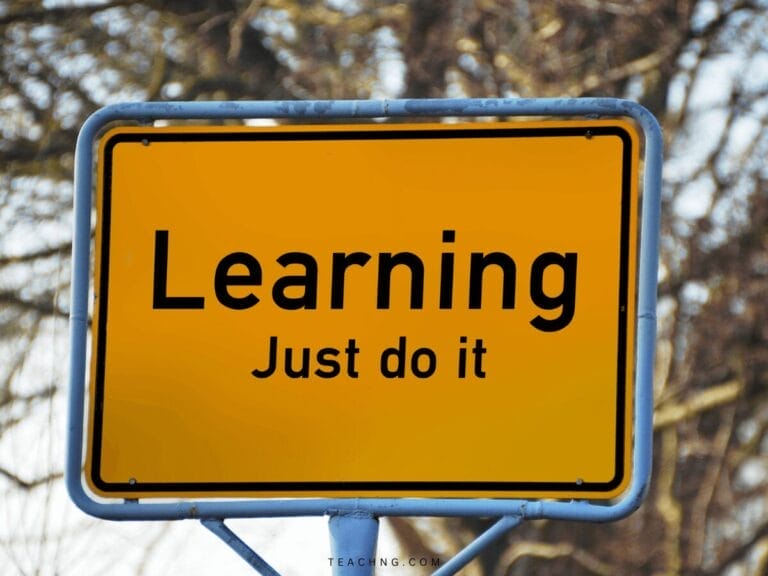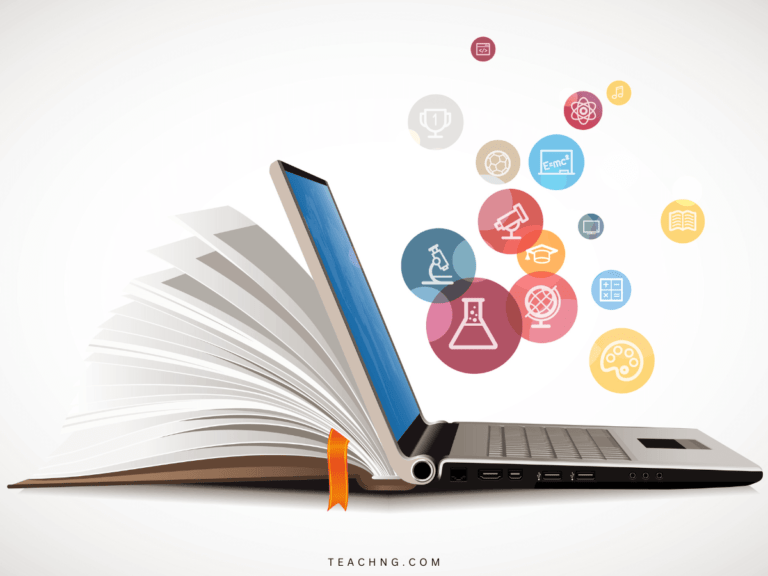Today, the education sector are using artificial intelligence (AI) to enhance the student learning experience and transforming the way we teach and learn.
Use of artificial intelligence and machine learning will have the biggest positive transformation that education have ever experience since 1972, where US passed the Title IX Act, allowing girls to go to school. With 73% increase of learning efficiency with AI, the potential of AI in education is huge.
- Educators can leverage AI can be used to create entire course content.
- Student can use AI to personalize the learning experience.
- Deployment of AI system to take care of the various parts of education management.
- AI can also provide insight into big data.

KEY TAKEAWAYS
- AI and machine learning usher in the most significant positive shift in education since the 1972 Title IX Act, with a 73% increase in learning efficiency AI is here to stay.
- With AI, it offers personalized learning, comprehensive course content creation, and efficient education management through AI systems, reshaping education through adaptive learning, assistive technology, early childhood education, and beyond.
- Future of AI in education involves gradual AI adoption, AI literacy for students, and collaborative efforts between educators, students, and AI systems.
What Is Artificial Intelligence (AI) in Education?
AI in education, or Artificial Intelligence in Education, is all about leveraging the power of AI technologies to enhance teaching and learning experiences.
These systems use machine learning algorithms to adapt to individual learning styles, thereby creating a more effective learning environment.
From personalized learning paths to data-driven decision-making, the possibilities AI in education are boundless.
How You Can Use AI in Education (with Examples)
The potential of AI in teaching and learning is nothing short of remarkable. It’s like having an educational wizard at your side, helping you unlock a world of possibilities. Here are some ways that AI is being used in education.
1. Adaptive Learning
AI can help each student to gets a tailored learning experience by:
- Assessing a student’s current skills and knowledge.
- Creating a personalized path for each of the learners.
Whether a student needs extra help in math or is ready to advance in science, AI can adapt and guide their educational journey. It’s like having a private tutor, always available to help.
2. Assistive Technology
AI extends a helping hand to students with special needs.
- For visually impaired students, AI can read text aloud, making educational materials more accessible.
- For color blinded, AI can change the color of the image so it will be color-blind friendly.
- For slow learners, AI can personalized the learning curriculum so that each learner can learn at their own pace.
With AI, it can help to level the playing field in education, ensuring that every student has an equal opportunity to learn and succeed.
3. Early Childhood Education
The use of AI in early childhood education is nothing short of genius. Interactive games powered by AI are turning basic academic skills into exciting adventures for young learners.
These games not only educate but also engage and entertain, creating a positive learning environment that sets the stage for a lifetime of curiosity and knowledge.
4. Data and Learning Analytics
Teachers and education administrators use AI to collect, analyze, and interpret data. This wealth of information allows educators to make informed decisions.
- Improving the curriculum
- Identifying areas where students need more support
- Enhancing the overall learning experience,
AI’s data-driven insights are invaluable for helping learners reach their learning goals.
5. Scheduling Made Easy
AI can streamline the often complex task of scheduling. For administrators, this means efficient course scheduling, better allocation of resources, and overall improved school management.
AI in education is like having a personal assistant that takes care of all the logistics, allowing educators and staff to focus on what they do best.
6. Facilities Management
Schools have a lot of moving parts, from power and Wi-Fi services to maintenance and security. AI is highly effective at monitoring the status of these services and alerting facilities management when issues arise.
Facilities management with AI is an proactive approach that can help ensures a safe and productive learning environment.
7. Overall School Management
AI isn’t just about helping with individual tasks; it can manage entire schools.
- Manage student records
- Manage transportation
- Manage IT
- Manage maintenance
- Manage scheduling
- Manage financial budgeting
Incorporating AI into education plays a central role in school administration, a comprehensive solution that simplifies the complexities of running an educational institution.
8. Writing Assistance
AI isn’t limited to student support; it also benefits educators and content creators.
AI tools can help improve writing skills, correct grammar and spelling errors, and even generate content.
9. Innovative Classroom Management
AI can enhance classroom management, making it easier for teachers to create engaging and productive learning environments.
Whether it’s managing behavior, lesson planning, or incorporating audio-visual elements, AI offers a helping hand in the classroom.
10. Parent-Teacher Communication
Effective communication between parents and teachers is crucial for a student’s success.
AI can streamline this process by providing tools for clear and efficient communication. It ensures that parents are well-informed about their child’s progress, fostering a strong partnership in education.
11. Language Learning
AI is a valuable resource for language learners. It can provide language lessons and practice exercises, adapting to the learner’s level and progress.
This personalized approach accelerates language acquisition and makes learning a new language more accessible.
12. Test Preparation and Assessment
From helping students prepare for tests to automating the assessment process, AI simplifies the evaluation of student performance. It ensures that assessments are fair, accurate, and timely.
13. Learning Management Systems
Educational institutions rely on Learning Management Systems (LMS) to deliver online courses and manage student data.
AI is at the core of these systems, making online education a seamless and efficient experience.
14. Gamification for Enhanced Student Engagement
Learning should be fun, and AI-powered gamification is making it possible.
Educational games powered by AI engage students, making the learning process enjoyable and effective.
15. Staff Scheduling and Substitute Management
Efficiently scheduling staff and managing substitutes is a complex task.
AI can optimize these processes, ensuring that schools are adequately staffed and substitutes are readily available when needed.
16. Professional Development
Educators can benefit from AI-driven professional development.
Using AI, it can provide insights and resources for continuous growth and improvement, helping teachers become even more effective in their roles.
17. Transportation and Maintenance
AI extends its capabilities to managing transportation logistics and facility maintenance. It ensures that buses run on time, students arrive safely, and facilities are well-maintained.
18. Financial Management
Schools have budgets and financial responsibilities. AI can assist in budgeting, financial planning, and ensuring that resources are allocated efficiently.
19. Cybersecurity
With the increasing importance of online learning and data management, cybersecurity is paramount. AI helps protect educational institutions and their data from cyber threats.
20. Safety and Security
Ensuring the safety and security of students and staff is a top priority for schools. AI plays a crucial role in monitoring and enhancing safety measures.
Harnessing the Potential of AI in Schools
To truly understand the impact of AI in education, we need to look at its real-world applications. AI is already being integrated into the education system in numerous ways.
- Personalized Learning: AI can analyze each student’s strengths and weaknesses, allowing educators to tailor their lessons accordingly. It creates a learning environment where students can progress at their own pace, ensuring no one gets left behind.
- Role of AI Technologies: AI technologies like machine learning algorithms and generative AI tools are used to develop content and teaching materials. These technologies can even automate administrative tasks, such as lesson planning and scheduling.
- AI and Education Leaders: Education leaders are recognizing the potential of AI in transforming learning and teaching. The graduate school of education dean, in particular, emphasizes how AI can enhance the capabilities of teachers and support them in delivering better educational experiences.
Benefits of AI in Education

The advantages of AI in education are numerous and promising. Let’s explore the positive transformations it brings to the educational landscape.
1. Personalized Learning
Imagine a classroom where every student has a personalized learning journey, tailored to their unique needs and learning style.
AI makes this dream a reality. It’s like having a dedicated tutor for each student, available 24/7. Here’s how AI accomplishes this:
- Adaptive Learning: AI-driven adaptive learning platforms assess a student’s skills and knowledge, creating a customized learning path.
- Progressive Learning: As a student progresses, AI adapts the content and pace to ensure optimal comprehension and retention.
- Personalized Learning: Personalized learning enhances understanding, retention, and overall educational success.
2. Enhanced Accessibility
AI isn’t just about individualized learning; it’s also about breaking down barriers to education.
It’s making education more inclusive and accessible to all, regardless of their background or circumstances. Here’s how AI achieves this:
- Global Classrooms: AI transcends language barriers, making it possible for students from different corners of the world to join virtual classrooms. It fosters a global community of learners who can interact and learn from one another.
- Inclusion for All: AI opens doors for students with visual or hearing impairments, providing them with equitable access to education. This inclusivity ensures that every student, regardless of their physical abilities, can engage in the educational journey.
- Overcoming Physical Barriers: Illness or physical limitations no longer prevent students from participating in their education. AI tools enable remote learning, allowing students to continue their studies from the comfort of their homes. It’s a significant leap forward in the realm of education.
3. Administrative Efficiency
Educational institutions rely on smooth administrative processes to function effectively.
AI takes on the role of a diligent administrator, streamlining various tasks that keep schools running efficiently. Here’s how AI contributes to administrative efficiency:
- Scheduling: The complexity of scheduling courses, managing resources, and coordinating events is simplified with AI. It ensures that schools run on well-organized timetables, minimizing conflicts and maximizing efficiency.
- Maintenance: AI monitors the status of critical services like power, Wi-Fi, and water. It alerts maintenance staff when issues arise, allowing for swift resolution. This proactive approach ensures that the learning environment is always conducive.
- Budgeting: Managing an educational institution’s budget is a complex task. AI assists in budgeting processes, offering insights and recommendations to allocate resources optimally. This results in cost-effective operations and better financial management.
4. Support for Teachers
Teachers are the heart and soul of education, and AI empowers them with tools to excel in their roles. Here’s how AI provides invaluable support to educators:
- AI Recommendations: AI offers personalized recommendations to teachers, helping them address individual student needs, from adapting content to different learning styles to fine-tuning instructional approaches.
- Teacher’s Assistant: Assisting teachers in administrative work and task which are routine and predictable, freeing up teachers time to do things that truly matter to the students.
5. Data-Driven Decision-Making
Data and analytics are the keys to informed decision-making in education. AI provides the tools necessary to harness the power of data. Here’s how AI contributes to data-driven decision-making:
- Data Analysis: AI systems are adept at processing vast amounts of data. Teachers and education administrators can use AI to analyze and interpret data related to classroom dynamics, and educational outcomes.
- Data-Driven Insights: AI enables teachers to gain insights into each student’s progress and areas where they may need extra assistance. This data-driven approach leads to more effective teaching and improved student outcomes.
Challenges and Concerns of AI in Education

While AI brings significant benefits to education, it’s not without its challenges. We must navigate these concerns to harness AI’s potential effectively.
1. Plagiarism Concerns
AI-powered tools make it easier for students to generate content, raising concerns about plagiarism.
Educators need effective strategies to detect and prevent academic dishonesty.
2. Ethical Dilemmas
The use of AI-generated content blurs the line between original work and machine-generated text.
Resolving these ethical issues is essential to maintain academic integrity.
3. Bias in AI Algorithms
AI systems learn from their training data, potentially perpetuating biases present in that data.
Addressing bias in AI algorithms is crucial for fair and equitable education.
4. Privacy and Security
Storing and analyzing personal data in AI interactions raises privacy and security concerns.
Protecting sensitive information is a top priority.
5. Impact on Social Interaction
Increased AI use may reduce face-to-face interactions among students.
Finding the right balance between technology and social learning is a challenge.
6. Overreliance on Technology
Educators and students may become overly reliant on AI-generated content, potentially affecting critical thinking and the quality of educational materials.
7. Equity and Access
The digital divide hinders equal access to technology.
Addressing these disparities is crucial for equitable AI integration in education.
What Does AI System Means for the Future of Education?

The future of AI in education is bright. As AI technologies continue to evolve, we can expect even more significant transformations in how we teach and learn.
- Gradual Adoption: While AI’s potential in education is immense, it’s important to recognize that its adoption will be gradual. Over time, educators and institutions will find new and creative ways to harness the potential of AI.
- AI Literacy: As AI becomes an integral part of the educational landscape, AI literacy will become essential for students. They will need to understand and engage with AI in their studies and future careers.
- A Collaborative Future: The most exciting prospect is a future where educators, students, and AI systems work together to create a truly personalized and effective learning experience.
With AI by our side, the future of learning has never looked more promising.
Time to Use AI For Education
AI in education represents a seismic shift in how we teach and learn.
The potential for AI to transform traditional education into a dynamic, personalized, and efficient system is unparalleled.
While challenges and concerns exist, the benefits of AI in education are poised to redefine the learning landscape for generations to come.
Together with using the right tools, it can make education a more engaging and personalized experience.
Getting started with the right platform and LMS can help you succeed in the future of education:
Together with using the right tools, it can make education a more engaging and personalized experience.
How useful was this post?
Click on a star to rate it!
We are sorry that this post was not useful for you!
Let us improve this post!
Tell us how we can improve this post?





